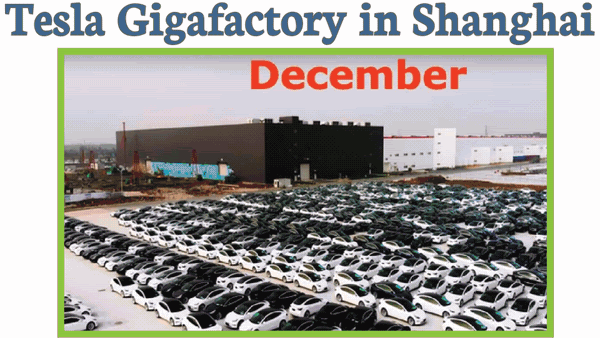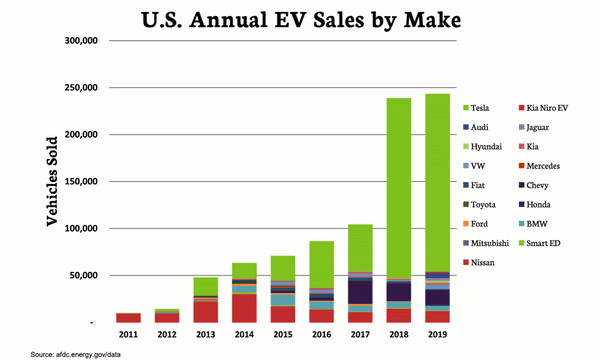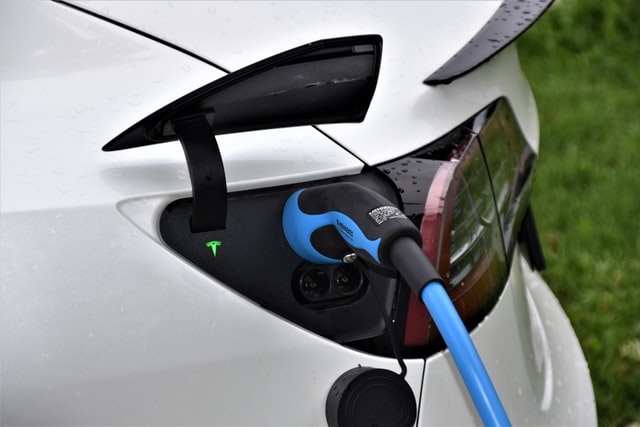GreenStar Monthly Newsletter Excerpt- Stock Highlight: Tesla – July 2020

Growing up, many of you may have shared a common envy. As the children and grandchildren of the World War II generation, their life experience seemed vastly more historical, epic, and interesting.
Wishing to live in historical times always carries with it The Monkey Paw’s curse, “Oh, you wish to live though history, do you?” We are learning that sometimes watching history unfold can make you long for boredom. The trials of humanity are never ending, and the events of today will be among our societal battle wounds. We can only hope that we learn from our scars.
Stock Highlight: Tesla (TSLA)
Typically we don’t talk about individual stocks. The reasons for buying or selling specific securities usually doesn’t convert well into short-form prose, so we tend to stick to general commentary. However, Tesla is an exception and we felt that it would be interesting to share how we see the company, the stock, and what is at this point an obvious and inevitable pivot in transportation.
For the past 12 years, we have followed the ambitions of Elon Musk in the same way that some people follow sports. He is the CEO of both Tesla and SpaceX. He also helms other projects (sometimes within these companies) around low cost tunneling, solar energy, global space-based internet, connecting our brains with computers, and many other things. Despite his eccentricities, comparisons to Edison and da Vinci are well-suited. He has said that his life goal is to die on Mars, adding, “Hopefully not on impact.” On the other hand, there is a yin-yang to Musk’s talents. As great as his gifts are, his oddities get in his own way at times.
Over the years, we have watched Tesla mature as a company with mixed feelings. While the products were always compelling, as recently as a year ago, we felt that there was around a 30% chance the company would become insolvent – well above our internal risk threshold. At the time, we simultaneously greatly admired the company and Musk himself, but their growth ambitions were objectively insane, not impossible, but improbable – even Musk was open that they had “bet the company” on their mass market Model 3. In the fall of 2019, we felt that they had emerged on the sunny side of this “bet.”
Through the pandemic we have sought to find companies that we believe will not only prevail through this, but lap their competitors. We feel that Tesla is one of those companies, which is why we bought it as a long-term holding in most of our portfolios last month.
Again, as those who have watched Tesla like baseball, it is a challenge to be concise. To do this, we will focus on the company’s growth prospects rather than the products themselves. For the products, we highly recommend you test drive a Tesla. It’s like jumping forward in time 10 years.
Strength in Crisis
Naturally, during poor economic conditions, folks are not eager to buy new cars. In the second quarter of 2020, U.S. auto sales plunged by about 35% (source). Across the industry, auto makers are scrambling to remain solvent by going into debt and making cuts. Many cut back developments of electric vehicles (EVs) or delayed them significantly. Last Thursday, Tesla announced that they delivered 90,650 cars in the second quarter of 2020 – this was considerably higher than analyst expectations of 72,000.
Even before the pandemic, many manufacturers were struggling to not only produce EVs at scale, but also create something that consumers found compelling – let’s be honest here, most EVs look pretty stupid. Some of manufacturers were battery constrained, meaning they struggled to secure the raw materials to produce the batteries. Because of this, some manufacturers have had to limit sales because they can’t produce enough batteries (e.g. Audi E-Tron). Others have been plagued by software issues (e.g. Volkswagen ID.3) or problems with hardware catching fire (e.g. Porche Taycan). Tesla on the other hand has already gone through many of these growing pains and we feel is well poised to expand their EV dominance as their competitors lose further ground during these times.
As of the writing of this newsletter, Tesla has not announced their second quarter financial numbers. The fact that there is a chance that they will be profitable when their factories, and the economy as a whole, were shut down for a significant portion of the quarter of it is breathtaking. In our view, it doesn’t matter whether they will technically be profitable – the fact that this is even close to possible illustrates a strength their competitors likely did not experience. If they are profitable, Tesla becomes eligible to join the S&P 500 which automatically adds some demand to the stock.
Tesla as a Factory Factory
That’s not a typo, Tesla is a factory factory. Meaning, they are not only innovative in their machines, but in the machine that builds the machines – which they call Gigafactories.
Two years ago in July 2018, Tesla announced plans to build a new Gigafactory in Shanghai with an estimated cost of $5 billion. They said that it would take two years until they could produce cars and 2-3 additional years to reach full capacity. Many people were skeptical that this aggressive time frame and low cost were possible (here’s an article written at the time).
In October 2018 the land lease was signed. Construction began in December 2018. Ten months later the factory was producing cars, and by December 2019 they had a large parking lot full of them. The factory was completed in one year … ahem, one year for a cost less than a third of what was predicted. Here was the progress in 2019:

To note, the cars from this Shanghai factory are only for the Chinese market. This is also the first wholly foreign-owned car plant in China.
They recently began construction on a factory in Berlin to supply the European market. Tesla’s advantage in the European market is particularly interesting because of their cap and trade policies. Tesla receives several billion per year from their competitors buying CO2 credits. Tesla is currently in talks to build another factory in Texas. There are rumors of additional factories in South Africa, India, and Kazakhstan.
It’s fair to say that no other company is doing this, at this level of efficiency and speed. It will be hard for competitors to catch up to this within the next five years.
When your Competition is Subsidized and you Still Win
It is a common misconception that Tesla is succeeding because of U.S. federal subsidies. This was partially true. The federal government gives consumers a $7,500 tax break if they buy one of the first 200,000 EVs an automaker sells. Tesla sold its 200,000th car in July 2018 – the first automaker to do this. What this means now is that the government will pay you if you buy any other electric car other than a Tesla. Even with this headwind, people are still choosing to buy Tesla’s. Again, this is stunning.
In the chart below we can see all EV sales in the US by manufacturer. We’ve grouped all other EV makers at the bottom of each bar and put Tesla on top of everyone else in GreenStar green. What may be surprising is that despite the hoopla about EVs, if you remove Tesla from the numbers, the EV market has been fairly flat since 2014. However, with Tesla factored in, we can see that Tesla effectively is the EV growth. They dominate the EV industry, consisting of over 75% of the market even though consumers would get $7,500 to buy any other EV. Again, this is only looking at sales in the United States:

They’ve got the Power for Success
No, we’re not quoting Tony Robbins. They literally have the power, the battery capacity, to scale up. When Tesla announced the first Gigafactory in Nevada in 2014, they said it would product 35 gigawatt-hours per year of battery cells. Just as with many other things Tesla, there was much skepticism about this as it was more than all batteries produced on planet Earth the year before. The factory achieved this in May 2019.
Not only this, but Tesla produces batteries at about 20% cheaper than its competitors (Source). Even at this lower cost, their cells are about 42% higher core efficiency (Source).
Even with this lead, there are some eye-popping rumors swirling around the forthcoming announcement on “Battery Investor Day,” tentatively set for September 15. It’s likely that Tesla will be announcing substantial battery improvements that will enable them to lower their manufacturing costs and environmental impact while increasing their battery range and longevity. More importantly, we suspect that they will lay out ambitions for producing an unimaginable amount of batteries. There are whispers of a million mile battery, the end of range anxiety issues, and a path to EVs actually being cheaper than gas cars. We suspect that they have achieved a breakthrough which will add additional years to their already multi-year lead in battery technology. For those interested, we highly recommend you watch this.
More Places where Tesla Is Years Ahead Of Competitors
In addition to batteries, we’ve identified several key areas that we feel Tesla is 3-10 years ahead of their competition and, as far as we can tell, increasing their lead:
- Charging network – Tesla has about 2,000 supercharger stations with 18,000 superchargers. Do you know how many the other automakers have? It’s trick question. They don’t have them. There are several third party companies though.
- Economies of scale – When you make more of something, the per-unit-cost goes down. In the U.S., because Tesla produces over 10x more than the next greatest manufacturer, they enjoy far better margins.
- Software – When you own a Tesla, it gets better as you own it. Just like your phone, Teslas receive over-the-air software updates. In the past, this has added many new features, as well as adding additional power and range to their cars. Yes, last November Tesla owner woke up to find that their cars could accelerate 5% quicker and could go another 15 miles on a charge. Or for $2,000 they can increase the acceleration from 0-60 in 4.4 seconds down to 3.9 seconds just through an over-the-air software update. There is simply no parallel to this in the automotive industry.
- Self-driving – This is a whole can of worms. There are many approaches to self-driving and not all of them will work in the long run. In short, Tesla has developed a highly sophisticated system that uses artificial intelligence along with the 8 cameras, 12 ultrasonic sensors, and a radar system. Their system is effectively learning how to drive from everyone driving Teslas. We believe that what they’ve developed is many years ahead of the competition (as much as five). More than this, we feel that many other approaches to self-driving are going to eventually reach an upper limit of ability and those companies would have to start over and approach it the same way Tesla has.
- Robo-Taxis – Should Tesla successfully develop self-driving, they have publicly said that they will send an over-the-air update to the fleet and “wake up” over a million Robo-Taxis – which is like an Uber or Lyft without a driver. Users will have the option to make money off their Teslas when they’re not using it. Imagine your Tesla drops you off at home and then drives off to make you money while you sleep. They have said that they can offer this to people at a cost far less than Uber and Lyft and would open up many billions in potential revenue. Should this exist, there are many consumers who would opt not to own a car at all, or go down to a one-car family putting further negative sales pressure on their competitors. Additionally, this opens up an area of business for Tesla where they manufacture cars solely for use as Robo-Taxis.
- Computing Hardware – Several years ago, Tesla realized that to meet their self-driving ambitions they would need to develop their own computer chip. In April 2019, they announced “Hardware 3.0” which was a 27x increase (at the same power) as their old chip. They are currently working on the next generation version of the chip which may be ready in about a year.
Granted, it’s not all peaches and cream. We feel that there are still plenty of ways that Tesla’s can improve. However, it would be hard to point to a car company more hungry to bring the future to the consumer. We see that the automotive market is on a path of diminishing reasons not to buy a Tesla or to use them for transportation.
Even with this said, we have barely spoken about the products themselves or EVs as a better user experience. EVs are far less maintenance (no oil changes, transmission fluid, coolant change, replacing batteries, spark plugs, lower brake wear, mufflers, etc.). The simplicity of an electric motor means that there are far fewer mechanical issues and less that can go wrong. An EV has about 20 moving parts. An internal combustion engine (ICE) has about 2,000 moving parts (Source). Besides, the cost to charge the car is substantially less than a tank of gas.
Also, we haven’t mentioned that Tesla has many ancillary businesses such as solar panels and solar roof tiles. They also offer residential batteries and are regularly creating giant commercial battery farms to serve the function of peaker plants. There have been whispers of a HVAC product for homes that is a heater, air conditioner, air filter, and water purifier all-in-one.
The End of the ICE Age
If you were to go back to the year 1910 and ask people what they wanted, they would have said, “Faster and tougher horses.” At times, the consumer does know that they want until someone delivers the future to them. Henry Ford delivered this with affordable cars.
Right now, consumers may not realize that they don’t want to own a car. They want convenient and affordable access to cars that they don’t have to drive. Most people would happily accept a free chauffeur who drives a car that you aren’t liable for.
Granted, there will always be folks who do wish to own their own car, but over time this will be a shrinking pool of people. In time, people will come to realize that the one thing more convenient than owning a car is not owning one. This is probably how people felt about horses in the early 20th century. They didn’t realize what a pain it was to own horses until they had the option to not own them.
As we write this in the year 2020, it is too early to declare the end of the ICE age, but the future grows more obvious as we move towards it. In time, the combination of the above will make buying a gas powered car progressively quaint.


